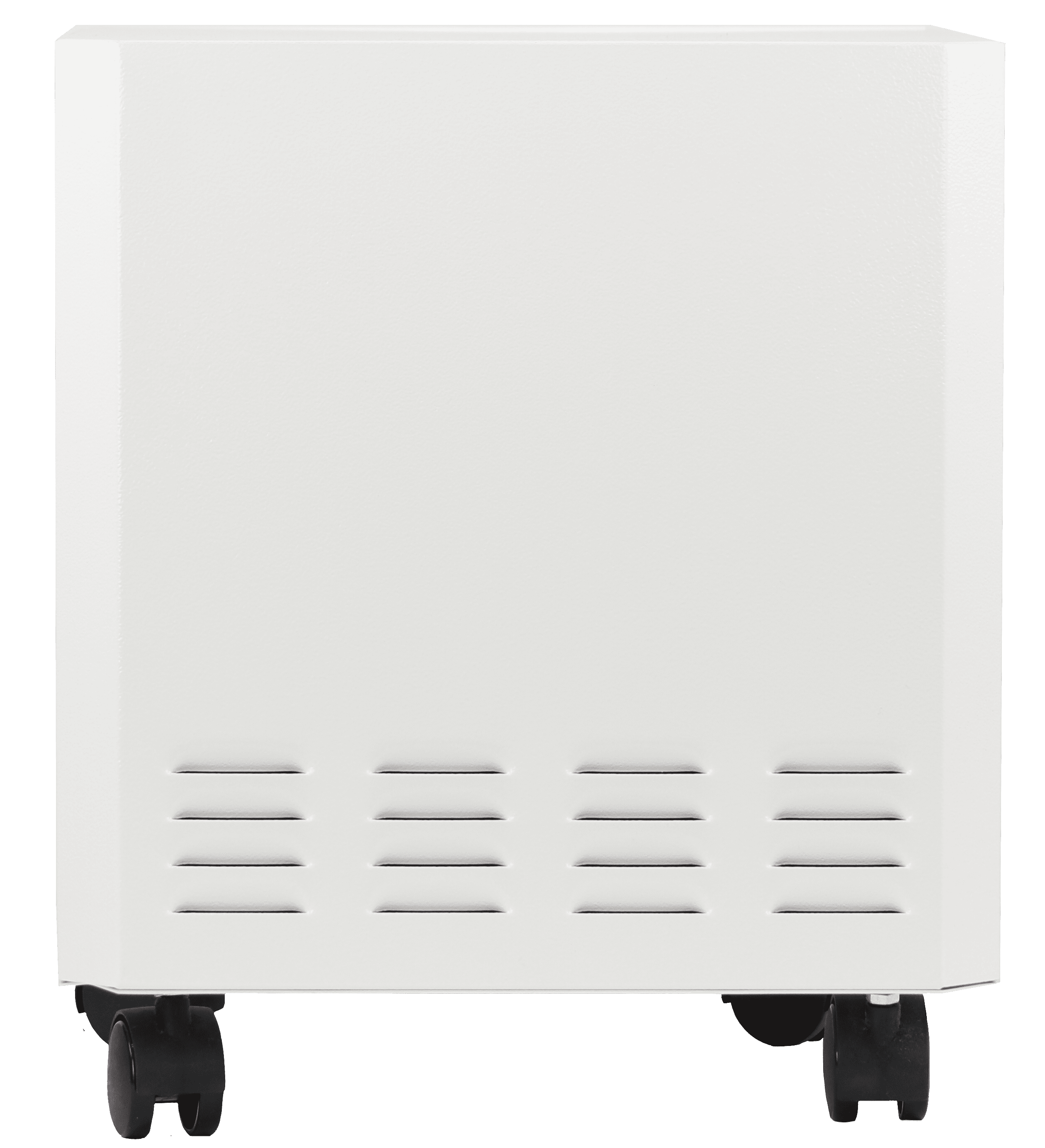How to Combat Dust and Dander Allergies Indoors
The air inside your home can be swirling with various contaminants such as pet hair, dander, dust, and a broad spectrum of other allergens that find their way inside your indoor environment. Over time as these allergens develop and fester in the indoor space it can lead to an overabundance of pollutants in the air that will not only taint the indoor air quality levels but will also effect those occupants in this space that are allergic to these allergenic substances present in your air such as dust and dander. But how can you know if dust and dander are a problem in your home or the levels of these allergens present in the air?
Dust and dander can be produced into a home from a number of different sources within the space, many of which may come as a surprise to you. Whether you have pets, been in contact with a pet, or even have dander travel onto your clothes while in an environment, this can lead to the presence of dander in a home, as well as dust that can come from a number of sources in the home.
In this article we are going to learn more about the effects of dust and dander on allergies, how to determine the level of these allergenic substances in the air, and the best way to remove these allergen sources from your home.
What is Dust and Dander
It may come as no surprise that there are substances present in your home that can elicit an unfavorable reaction in many residents that live within this indoor space. Anything from chemicals floating in the air, odorous compounds, and even allergens such as dust and dander, will all have an impact on the health standing of those occupants in this space that are susceptible to allergies. Indoor dust and dander are among the most common problems for those who suffer from dust allergies or asthma, along with other major allergy problems. Dust and dander can form inside of a home quickly, aggressively, and often times unknowingly – as the levels that are harbored within this space may come as an utter shock to most homeowners.
Dust is a well-known allergenic substance that can be found in most homes and is a highly irritating substance that can cause a range of symptoms and health effects. Did you know that two-thirds of dust in your home comes from outside, such as dirt, pollen, and soot? According to Science Focus most dust found in a home will be the combination of carpet material, clothing fibers, pet hair (dander), and outside dirt and pollen that swirl together to form the dust you see on the surfaces and air within the indoor environment. Whereas dander is an allergenic material that is shed from the body of both humans and animals that are identified as skin flakes that will float throughout the environment and potentially cause an allergic response. Dander particles are microscopic and thus making it difficult to determine its presence in your home or if/when exposure occurs to those individuals in this indoor environment.

Dust and Dander Allergy Season & Forecast
The correlation between allergies and the weather outside your house’s doors can be a significant one, and one that we often do not consider. You may have noticed that your eyes will start to water on windy days, or your nose becomes stuff when it rains, all of which is a direct impact of the weather on your health – particularly on your allergy symptoms. When it comes to pinpointing exactly the time of year or season that you will experience dust and dander allergies the most it has commonly been linked to the winter months due to the increasing amounts of time that homeowners and occupants are spending within this personal indoor environment. However, as we spend increasingly more time indoors in response to the global Coronavirus pandemic many people are seeing a spike in their indoor allergies such as to dust and dander.
According to the Asthma and Allergy Foundation of America (AAFA), allergy and asthma control begins at home and when allergens are present in the air of your home it can have a significant effect on the health of those individuals in this environment that suffer from allergies. Additionally, eight out of 10 people in the U.S. are exposed to dust mites, and six out of 10 are exposed to pet dander indoors. Thus, gauging the levels or forecasts of allergens inside your home, specifically dust and dander is important to mitigating allergy symptoms when present in your personal indoor environment.
Dust and Dander Allergy Symptoms

How can you be sure that the health effects you are experiencing inside of your home are caused by indoor allergies like dust and dander? According to WebMD, half the battle of treating or identifying indoor allergies is recognizing that you have them in the first place. Allergy symptoms indoors can often immolate other illnesses such as the common cold, and therefore pinpointing the symptoms of allergies when you are exposed to elevated levels of dust and dander in your home is easier said than done.
Allergy symptoms can vary depending on numerous factors, such as the specific allergen in the environment, the levels of this allergen in the air, and the amount of exposure you have to these allergenic substances. Typically, however, the normal allergy symptoms that a person will experience will include the following;
- A drippy nose with water, clear secretions
- Itchy eyes
- Symptoms that linger for weeks
- Sneezing and an itchy, runny, or blocked nose
- Watery eyes
- Wheezing, chest tightness, shortness of breath and a cough
- Raised, itchy. Red rash
- Tummy pain, feeling sick, vomiting
- Dry, red and cracked skin
Why is Dust and Dander High in Home
Studies have found that a six-room home in the U.S. collects an average of 40 pounds of dust each year. What could be the reason for this high level of allergens in the home? A combination of poor ventilation and improper cleaning can contribute to a collection of dust and dander in your indoor environment. Poor ventilation results in less air flow, which when the air is trapped and is not filtered out the allergens also get trapped within the air and create high levels of these substances in your home. Ultimately, when it comes to airborne levels of allergens in a home, the ventilation inside this space will be the most important component to mitigating high levels of these allergens in your home.
Ventilation inside of a home can have a direct correlation to allergies and asthma in those individuals who suffer from these conditions. Many buildings and home’s today have begun to be built with a tighter configuration to limit and restrict airflow and ventilation to help maintain efficiency and energy cost in the home. However, when ventilation and air flow are restricted it can lead to an overabundance of pollutants in the air including allergens like dust and dander that are the most prevalent allergens in a home. Therefore, if you begin to experience adverse allergy symptoms in your home than the first place you may need to go to resolve this issue is increasing ventilation in the home.
Controlling Allergens Indoors
Allergens in your home are common and can happen in most households. When your allergies begin to go haywire in your personal environment, you may want to begin taking steps to guard your home. Treating your linens, surfaces, and your home’s air is important in combating indoor allergens.
- Clean Linens: Dust, dust mites, and pet dander can all find their way onto your linens whether it be your clothes, your towels, or even your bedding. Dust mites especially could make a home on your bed sheets and pillowcases, thus washing it is important to eliminate the dust mites. Also, pet dander is another major allergen that can get stuck in your clothes, as we love to give our pets love and attention by holding and petting them. When this happens, and you find that your clothes or even your bedding are causing your allergies to spike, using an effective laundry additive that will help to alleviate allergens trapped in your fabrics.
- Clean Surfaces: Flooring and furniture in your home have a way of trapping allergens or even giving allergens a place to make a home. Carpeting and fabric furniture especially will allow allergens such as dust, dust mites, pet dander, and mold spores to seep into the surface and lead to allergy flare-ups. Getting a solution that will work on the surface of your fabrics to expel indoor allergens is critical to improving indoor allergy symptoms.
- Clean Air: Lastly, your home’s indoor air can be a breeding ground for indoor allergens as they can make their way into the airflow and can cause allergy irritation. Many homes today have poor ventilation which can lead to indoor allergens being trapped in your home’s air, never getting cycled out by fresh air. Thus, the importance of filtering out allergens in your home’s air can help to improve not only your indoor air quality but also help to minimize indoor allergy symptoms.

Best Way to Remove Allergens from Home
One of the best ways to remove allergens from your home is through the use of an effective, allergy air purifier. If you have ever tried to look personally for an air purifier for your home, whether that be to remove odors, various airborne pollution from the air, or even to help mitigate allergens and allergy symptoms in your home, you will find that the options of different air purifiers on the market is endless. Air purifiers will all be different and contain different filtration methods, technologies, sizes, and square foot coverage ability – therefore, when you are looking to purchase an air purifier it is important to consider all of these factors to make sure that you find one that fits all your indoor air quality needs. When it comes to finding an air purifier specifically for allergies you will want to look for an air purifier that contains a quality grade filter that is capable of removing fine particulate matter like allergens from the air, such as a HEPA filter.

The EnviroKlenz Mobile Air System is a revolutionary air purification device that not only confronts and remove noxious and toxic chemicals and odors through their patented earth mineral technology, but also have the capability to remove fine particulate matter like allergens through the use of a hospital-grade HEPA filter. The EnviroKlenz earth mineral technology was designed to be a safe, nontoxic solution to capturing, containing, and neutralizing a variety of airborne chemicals and odors from the air completely. In addition to this advanced technology, EnviroKlenz placed an additional filtration stage within their air purifier that consists of a hospital-grade HEPA filter that will filter out fine particulate matter larger than 0.3 microns in size at a 99.99 percent efficiency. This dual-filtration capability provided in the EnviroKlenz Air Purifier makes for an effective air quality solution within your personal indoor environments.
Article Sources:
- Science Focus: What is Dust Made of? (link)
- Asthma and Allergy Foundation of America (AAFA): Control Indoor Allergens to Improve Indoor Air Quality (link)
- WebMD: Indoor Allergy Triggers (link)
- Institute of Medicine (US) Committee on the Assessment of Asthma and Indoor Air: Clearing the Air: Asthma and Indoor Air Exposures (link)

Mobile Air System

✓ Patented earth mineral technology works to attack VOCs and break them down on a compound level
✓ No chemicals or masking agents
✓ Will not release any chemicals back into your environment
✓ Safer and faster at removing VOC’s than traditional carbon filters and PECO air purifiers
Comments
Post a Comment